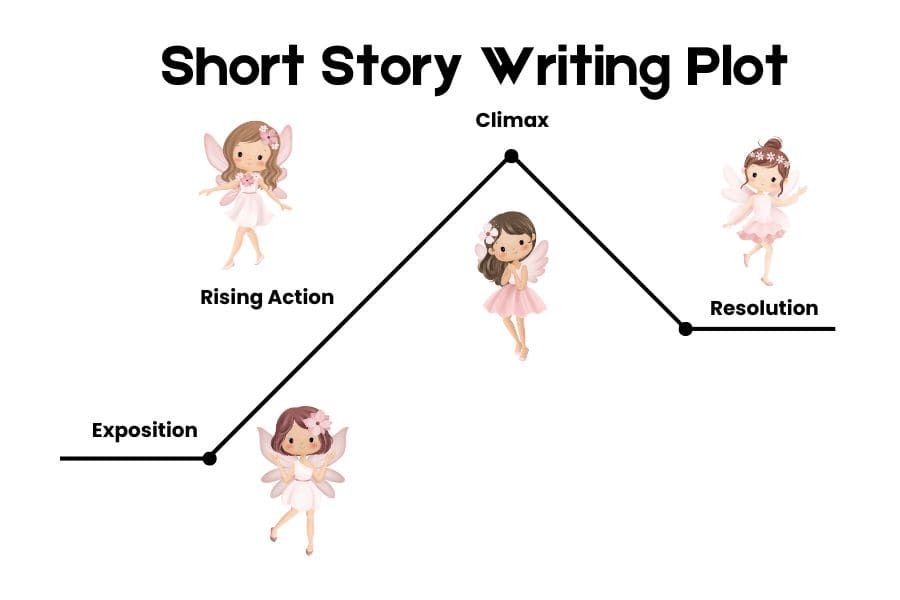Are you drawn to writing stories? Do you have a desire to write a delightful children’s tale, an adventurous spaceship saga, or a heartfelt romantic fantasy? Below is a short 2-part class teaching how to write short stories for new authors. I’ve included some general steps on how to write a short story and an example. I’ve given you general ideas on:
- How to brainstorm
- How to write a short story outline
- How to get started writing (dictation & typing)

Writing allows me to express my true self. It’s an outlet that’s vital for my existence. When I first started writing, I was terrible! But from my personal experience, most writing is about acquiring new skills, and for that I needed practice.
That’s the purpose of the creative writing prompts. They allow me to create new short stories when I have time during the week and a random writing prompt catches my attention. I hope you enjoy using these as much as I have.
There are 5 top-level steps to writing and publishing your work. These steps include:
- Brainstorming
- Outline
- First Draft
- Editing (out of scope for a blog post)
- Publishing (out of scope for a blog post)
- Marketing (out of scope for a blog post)
Brainstorming
Brainstorming is probably my favorite step. It’s the time I get to create the idea for my story. I love thinking of ‘what if’ scenarios, mashing up two or three stories, and changing the genre of fables. My first children’s book was made up, but it took place between the events of two other fairy tales. I’d been reading these stories to my daughter when I had the idea! Several years later, I had a story. I want to emphasize the several years because it was my first story, and I had a lot to learn.
When I brainstorm, I try to think of the answers to the questions below. I’m not forcing myself to come up with these answers. Instead, I’m going about my life doing chores, helping my daughter with homework, or walking. Slowly, the story starts to come as I allow the answers to these questions to filter to me:
- Who are the characters?
- What are they doing?
- Where are they?
- Why are they there or doing what they’re doing?
- How did this happen?
Creative Writing Prompts
If I’m stuck or just feel like a change of pace, I use a writing prompt. These are random sentences that intend to get your creative juices flowing so that you may brainstorm and create the idea for your story. You can find a writing prompts here. Here are some examples of creative writing prompts for children’s story authors:
- A young squirrel discovers a hidden forest library where every book tells the story of a different animal’s adventure.
- When a magical kite lifts them into the clouds, two friends meet a quirky weather wizard who needs help fixing a rainbow.
- A brave little owl must solve the mystery of the missing moon before nighttime creatures lose their light.
- In a town where everyone has a unique superpower, a boy with no powers learns that his kindness might be the greatest gift of all.
- A curious sea turtle sets out on a journey to find the legendary underwater garden only told of in bedtime stories.
How to Write a Short Story Outline
Creating a short story can feel like a big task, but using a simple outline can make it easier to organize your ideas and bring your story to life. Below is a five-step outline that serves as a roadmap for your story, guiding you through each essential part.
Start with the Exposition, where you set the scene and introduce the characters and the setting, drawing readers into the story’s world. Then, move to the Rising Action, where the first hints of conflict appear, building anticipation.
At the Climax, your character faces the height of their challenge, and this tension begins to unravel in the Falling Action, as the story’s conflict heads toward a resolution. Finally, in the Resolution, the problem is resolved, and readers are left with a satisfying sense of closure.
This structure will keep your story focused and engaging, helping readers connect with your character’s journey from beginning to end.
- Exposition: Set the scene.
- Rising Action: The beginning of the problem.
- Climax: The biggest problem.
- Falling Action: The problem is being resolved.
- Resolution: The problem is solved.
Go to Part 2 of How to Write a Short Story
Curious about crafting unforgettable stories? Dive into a free sample short story at ScribePrompts and see storytelling in action! Explore engaging characters and plot twists that spark inspiration for your own writing journey. Click to read and get inspired!
